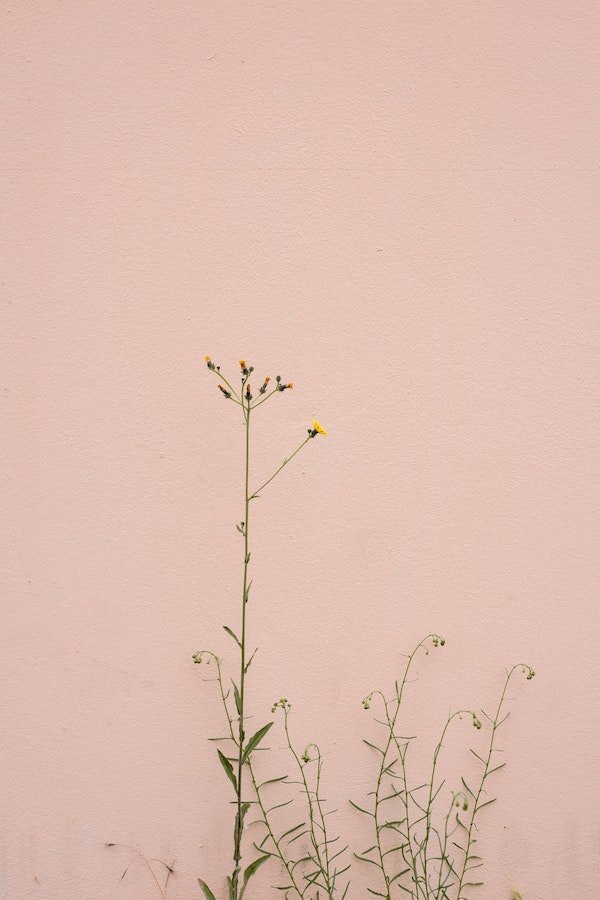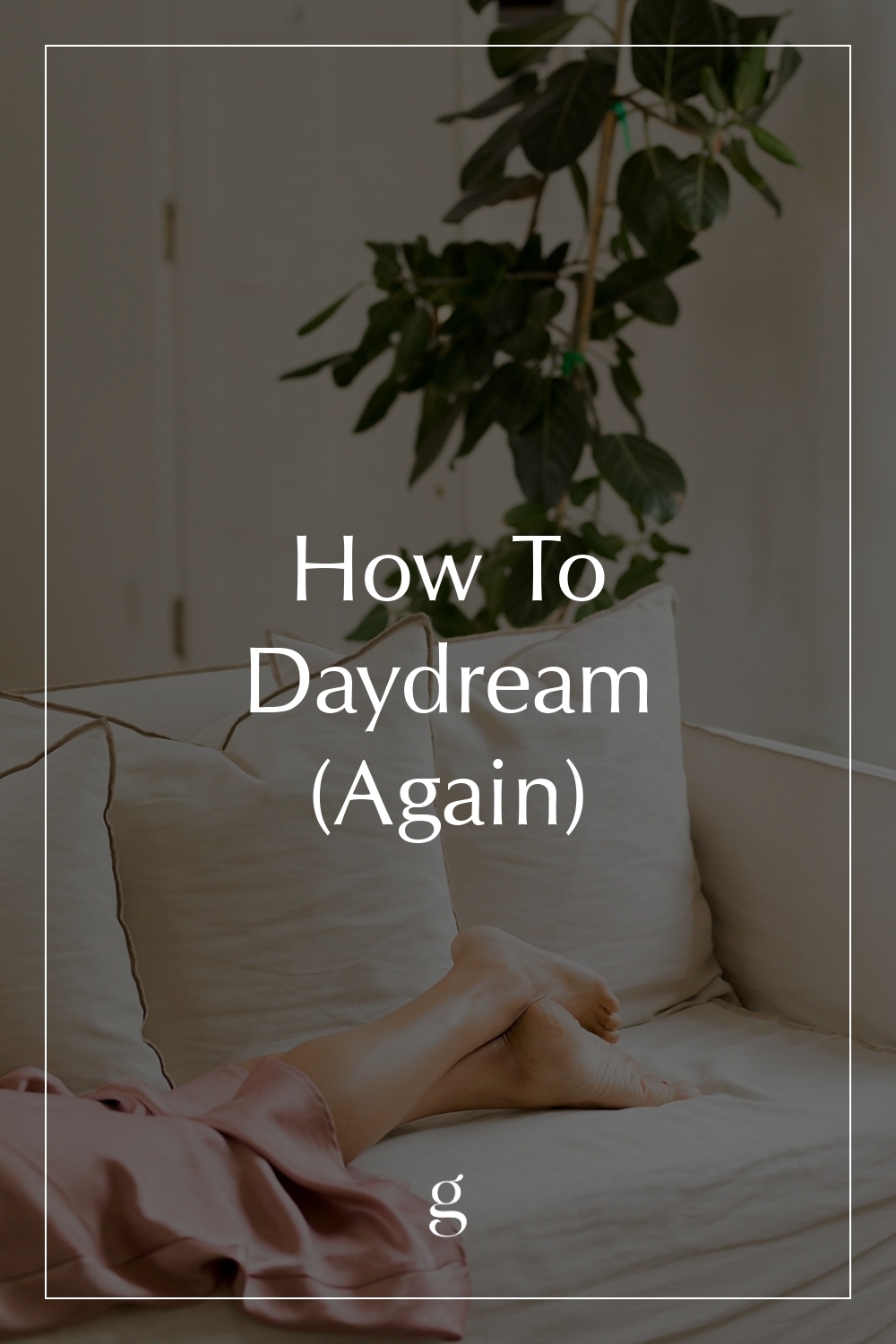
How To Daydream (Again)
Yes, Even As Adults
Daydreaming has earned a bad rap. As children, a blank stare out the nearest window conveyed an inability to focus. An unconscious doodling signified a disinterest in the present. The imaginative were quite literally “snapped” back to reality by the fingers of professors and parents. Reinforced time and time again was the idea that daydreaming was a disposition in need of being fixed.
“Reinforced time and time again was the idea that daydreaming was a disposition in need of being fixed.”
Now though, the passive activity feels like a lost art. We rarely wait in lines or go to the bathroom without our cellphones. When not beholden to a device, we’re still indebted to our to-do lists and calendar entries.
Even living mindfully can mean filling our free time with reading, exercising, and meditating. But when burnout happens—at work; energetically; within friendships—even those hobbies can feel consuming.
Very rarely do we do…absolutely nothing. Let alone think about nothing.
“Our culture keeps us busy,” says Deedee Cummings, therapist and children’s book author. “It is a badge of honor to be overwhelmed. And if you are not, you are lazy [and] not working hard enough.” But being overwhelmed leaves us with little time to dream; and dreams, says Cummings, are as much a part of our lives as any other daily routine, like drinking water and getting good sleep.
Moderate daydreaming can reduce stress and increase productivity; it can help us solve problems, expand our creativity, and provide an “emotional boost.” It’s not always the culprit of procrastination and delusion as culture so often sells it.
And it can strengthen our cognition. In daydreaming, our brain’s analytic and empathetic networks are at work simultaneously. According to Katina Mountanos, co-founder of the (aptly titled) mental wellness start-up daydreamers, the more components that can collaborate, the more we can protect our brains from deterioration as we age.
“Moderate daydreaming can reduce stress and increase productivity.”
“We want our brain to be as ‘dense’ as possible,” says Mountanos, who explains that when we get in “theta” state—the brain waves seen in connection with creativity and intuition and are strong during internal focus—we create healthier brains.
The Dutch call it niksen: doing nothing—or doing something but “without any use [or] purpose.” In Taoism, the principle Wu-Wei translates to non-action or, more accurately, “action without intent.” The intention, respectively, is to fight stress and to encourage practitioners to surrender, without interference or effort, to the natural order of things.
We can get on board, too.
So here are a few ways we can begin to have our heads (healthily) in the clouds.
Settle Into Being Stuck
Living in Los Angeles with a chronic health condition, there are no two places I wait more than a highway’s traffic or a doctor’s office. Despite being a provocation of my patience, there’s not much I can do in either instance. Both environments are out of my control, and going against their current, even silently (like a cartoon character with steam coming out of its ears), could be time better spent.
“[Ask] ourselves questions we rarely have time for.”
Cummings encourages us to view these moments as gifts, not curses, and to use the time to clear our minds instead of checking our social media at every stoplight: “Say, ‘I am blessed to have time to think.’”
After alerting any friends and family who might be awaiting communication from us, Cummings suggests we put our phones away, find a comfortable position, take some deep breaths, and daydream, asking ourselves questions we rarely have time for. Here are a few to start with:
“If I could do anything in the world, what would that be?”
“What are three things I want to be sure I do before I leave this Earth?”
“When I was a kid, I wanted to _____. Why haven’t I done that?”
“I am not happy with ______. What would my life look like without this?”
Create a Treasure Trove
It’s easy to recall the things that put me in a good mood; the music, movies, foods, and activities that have proven their mettle over and over again to get me out of a slump: Vampire Weekend’s debut album; Coming to America; pizza (if I’m in my home state of New Jersey; tacos in Los Angeles); relaxing in my local park.
But it’s harder to identify the things I enjoy thinking about. The future? No thanks! Current global events? Absolutely not! But this is exactly why, and where, we can start to embrace daydreaming. According to “Popular Science,” without a treasure trove of happy thoughts, our minds will wander to “financial woes, to-do lists, and sad events, sucking any fun out of musing.”
“Actively make a list of things that have or will bring us joy, then choose our preferred ‘thinking aid’ and, finally, pick a good time to blissfully mull them over.”
Instead, interviewed experts suggest we, first, actively make a list of things that have or will bring us joy (a happy memory, a future plan), then choose our preferred “thinking aid” (visualization, index cards, Post-It notes) and, finally, pick a good time to blissfully mull them over. That, I can do; this month alone, I’m anticipating a Leon Bridges concert, my birthday, and the birth of my first niece or nephew. 😊
Intentionally scheduling time to practice getting into an imaginative headspace is important to the process, says Mountanos. “It doesn’t need to be a big production,” she reminds us, noting that research shows we only need about 15 minutes of creative well-being or “mindless” daydreaming to get into the flow state.
Interrupt Our Efforts
Like most things, daydreaming is best in moderation. I’m not suggesting we relinquish all of our responsibilities. At work, at home, or in our social lives, it’s important (and even safe) to be alert, adaptable, and a good listener. But where and when possible, we can and should take breaks.
In their book “Wired to Create,” authors Scott Barry Kaufman and Carolyn Gregoire write that “our best ideas come seemingly out of the blue when our minds are off wandering elsewhere.” And research suggests incubation periods of mind-wandering can lead to improvements in creative thinking.
“Where and when possible, we can and should take breaks.”
The authors cite psychologist Jerome L. Singer who, over 50 years ago, found that daydreaming can be used for self-amusement, effective planning, and to enjoy private experiences. This type of mind-wandering is, too, related to creativity.
Kaufman and Gregoire suggest that the next time we’re hard at work on a task that requires committed concentration, we intentionally take a five-minute break every hour or so to daydream and see how it impacts or improves our ideation.
“A life without daydreaming is a life left unexplored.”
Daydreaming doesn’t make us absent-minded or air-headed. It’s not exclusive to adolescents and artists. When done within reason, we can all benefit; it can serve as a source of calm and creativity, a break from monotony and reality, and a reinforcement of both our empathy and productivity.
If we’re not taking the time to dream, says Cummings, we are limiting our full potential: “A life without daydreaming is a life left unexplored.”
So let’s get to know our subconscious selves.
RELATED READING
Danielle Cheesman was born and raised in New Jersey, where she lived until moving to Philadelphia to study journalism at Temple University. She has spent her years writing and developing editorial visions for music, art, and lifestyle brands. Now residing in Los Angeles, you can usually find her taking pictures, making playlists, or cuddling her pup. Say hi on Instagram!





